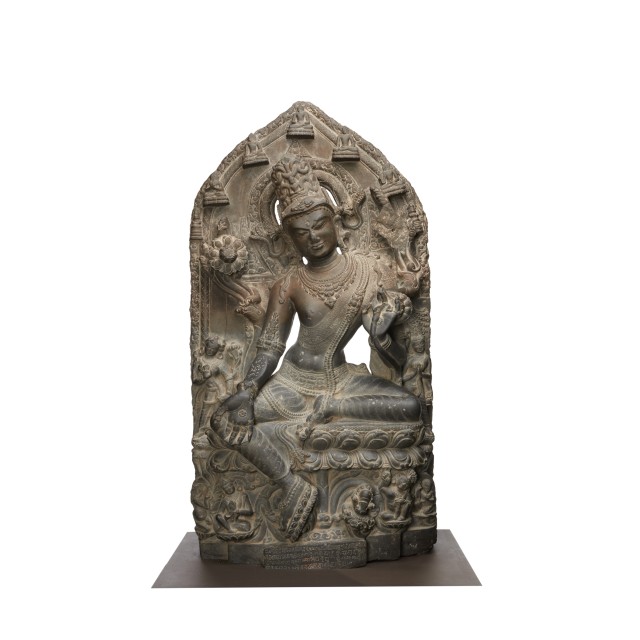Bodhisattva Avalokiteshvara in the Form of Khasarpana Lokeshvara

Photography by Synthescape, Digital image © Asia Society
Bodhisattva Avalokiteshvara in the Form of Khasarpana Lokeshvara
Late 11th-early 12th century
India, Bengal
Phyllite
H. 54 3/4 x W. 30 x D. 13 in. (139.1 x 76.2 x 33.02 cm)
Asia Society, New York: Mr. and Mrs. John D. Rockefeller 3rd Collection, 1979.39
Provenance
John D. Rockefeller 3rd, New York, NY; acquired from Ben Heller, New York, NY, 1967.
The Asia Society, New York, NY, bequest of John D. Rockefeller 3rd, New York, NY, 1979.
Licensing inquiries
This large stone image of the Khasarpana, or "Sky-Gliding" form of the Bodhisattva Avalokiteshvara, once decorated an architectural niche. He conforms precisely to his description in Buddhist textual sources: he is youthful, peaceful, smiling, has two arms, and wears his hair in a tall, matted coiffure. He demonstrates his compassion for all living beings by holding his right hand in the gift-bestowal gesture above a "hungry ghost." Because of lustful and greedy acts in former lives, hungry ghosts are doomed to an existence in which they suffer from insatiable hunger, but they have tiny mouths and narrow necks and can't satisfy their bloated stomachs. Avalokiteshvara feeds a hungry ghost who kneels beneath him (on the far left of the pedestal) with drops of nectar which flow from his fingers.

